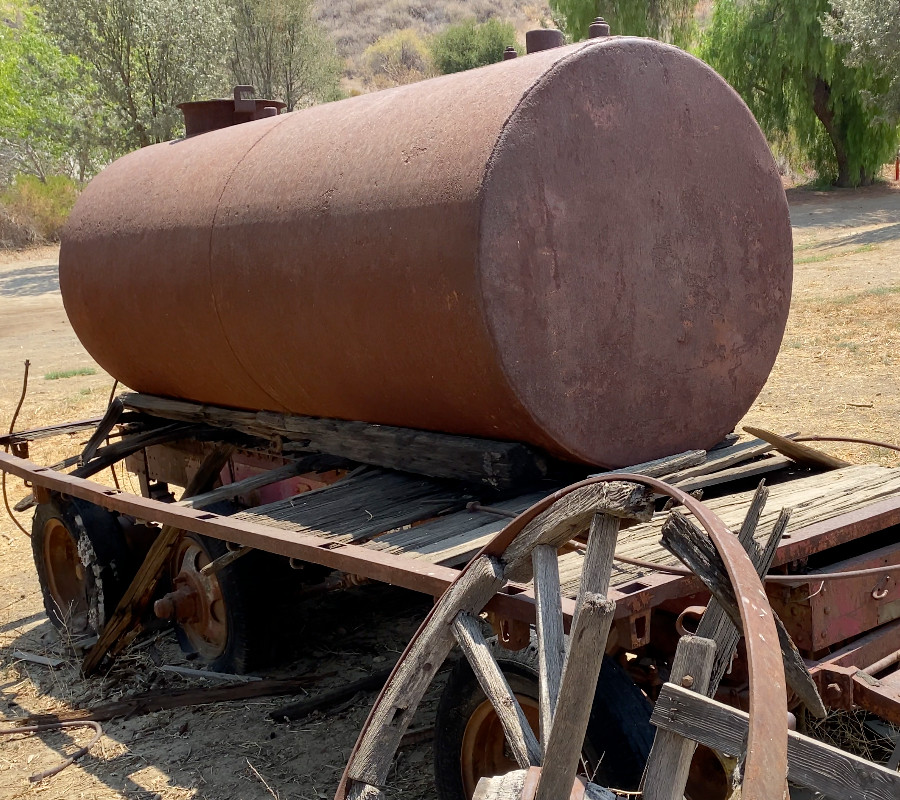
On this site stands CSO-4 (Pico #4), California's first commercially productive well. It was spudded in early 1876 under direction of Demetrious G. Scofield later to became first president of Standard Oil Company of California, and was completed at a depth of 300 feet on September 26, 1876, for an initial flow of 30 barrels of oil a day.
Later in the same year, the well was deepened to 600 feet using what was perhaps the first steam rig employed in oil well drilling in California. Upon this second completion, it produced at a rate of 150 barrels a day and is still producing after 77 years.
The success of this well prompted formation of the Pacific Coast Oil Company, a predecessor of Standard Oil Company of California, and led to the construction of the state's first refinery nearby. It was not only the discovery well of the Newhall Field, but was indeed a powerful stimulus to the subsequent development of the California petroleum industry.
It was under the direction of Demetrius G Scofield who later becomes the first president of Standard Oil Company of California - now chevron.
It went to a depth of 300 feet and had an initial flow of 30 barrels a day.
Later that same year the well was deepened to 600 feet - using what was perhaps the very first steam rig employed in oil well drilling in California.
Once it hit 600 feet it produced at a rate of 150 barrels a day for the next 77 years.The well was shut down in 1990 After producing oil for 114 years.
In 1911, the federal government broke Standard Oil into several pieces under the Sherman Antitrust Act. One of those pieces, Standard Oil Co. (California), went on to become Chevron.
Well No. 4, Pico Canyon Oilfield, located about seven miles west of Newhall, California, in the Santa Susana Mountains, was the first commercially successful oil well in the Western United States and is considered the birthplace of California's oil industry.Pico Canyon Oilfield:
- Drilled in 1876.
- Well No. 4 turned nearby Newhall into a boomtown and also spawned a smaller boomtown called Mentryville adjacent to the drilling site.
- Well No. 4 continued in operation for 114 years until it was capped in 1990.
- In 1875, the Star Oil Works, later reorganized as the California Star Oil Works Company, hired Charles Alexander Mentry (1846-1900) to supervise its drilling operations in Pico Canyon.
- Mentry drilled three wells in 1875 and 1876 that showed promise, but the "gusher" came with the fourth well.
- Mentry began drilling Well No. 4 in July 1876 and struck oil on September 26, 1876, at a depth of 370 feet.
- The well immediately began producing 25 barrels per day.
- Well No. 4 was drilled with great difficulty since the railroad had not then been completed, there was no road into the canyon, water was almost unattainable, and there were no adequate tools or machinery to be had.
- 1877 When Mentry drilled the well to a depth of 560 feet, the oil spurted to the top of the 65-foot derrick, increasing the production to 150 barrels per day.
Well No. 4 proved to be a success, Mentry constructed the first oil pipeline in California from Pico Canyon to the refinery in Newhall, later extending it 50 miles to the ocean at Ventura, California.
- Well No. 4 continued producing oil for 114 years before it was finally capped in 1990.
- It was the longest continually operating oil well in the world.
In 1882, the editor of the Los Angeles Times traveled on horseback to see the celebrated Pico Canyon oil wells. As he approached the camp, he noted that his horse refused to drink from the canyon's rivulet, which he found was "about half crude oil and half water." The editor described the booming oil region as follows:
There are eight wells now yielding oil, and three more in process of sinking, some in the canyon, some on the hillsides and some on the tops of the peaks, five hundred feet almost perpendicular from base to top... large boilers, heavy machinery, timber, and all the etceteras for oil mining and the comfort of the miners, have been hauled up these almost perpendicular roads... the deepest well on the mountains is a little over 1,500 feet in depth, and none have yet been sank but what have yielded oil in remunerative quantities. A 2-inch iron pipe, about seven miles (11 km) long, runs from Pico canyon to the refinery in Newhall, and through this an average of one hundred and seventy barrels of crude oil is sent every twenty-four hours...


















